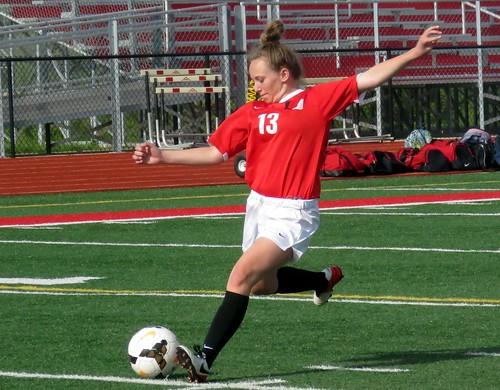5 Important Rules Of International Soccer
Soccer is a popular sport, with international soccer games held in sold-out stadiums and young children battling for the ball on Saturday mornings.
Author:Paula M. GrahamReviewer:Hajra ShannonOct 14, 202240 Shares1.2K Views

Soccer is a popular sport, with international soccer games held in sold-out stadiums and young children battling for the ball on Saturday mornings. Soccer has 17 international soccer rules written by FIFA, the World Soccer Governing Body. These rules are the same for every major league soccer team around the world. Let's look at five important rules for international soccer.
Field of Play
FIFA regulates the type and size of the fieldand the markings for games. International soccer is played on a natural or green artificial surface with the field marked with boundary lines, goal lines, and a center circle with a radius of 10 yards at the midpoint. Other aspects of the field include a goal area extending 6 yards onto the field, a penalty area, flagposts marking the corners, and a corner arc with a radius of 1 yard from each corner flagpost. The distance between the goalposts is 8 yards, with a height of 8 feet.
Soccer Ball
A soccer ball must be spherical and made of leather or other suitable material with a circumference between 68 and 70 centimeters. It should weigh between 410 and 450 grams at the beginning of the match and have a pressure of 0.6 to 1.1 atmospheres at sea level. If the ball becomes defective in a game, the match is stopped, and the ball is replaced. The ball cannot be changed once the game starts without the referee's authority.
Number of Players
International soccer games are played between two teams with a maximum of 11 players, including one goalkeeper. A game cannot be played if either team has fewer than seven players on the field. Official matches allow three to 12 substitutes, depending on the competition's rules. In international friendliestournaments, teams can completely remove the restriction on substitutes or agree to a higher maximum to allow more players a chance to get on the field. Any player on the field can change places with the goalkeeper if it's done during a stoppage in the game and the referee is informed.
Player Equipment
Basic player equipment includes a shirt or jersey with sleeves, shorts, socks, shin guards, and shoes. The shin guards must be made of plastic, rubber, or other suitable material to provide a reasonable degree of protection and be covered entirely by the socks. If any undergarments are worn, they must be the same color as the shirt or shorts. The teams must have colors that set them apart, with the goalkeepers wearing shirts that distinguish them from all other players and referees on the field.
Duration of the Match
An international soccer game lasts two equal periods of 45 minutes, unless an agreement has been made between the teams and the referee before the game starts. Players should receive a half-time that cannot exceed 15 minutes unless authorized by the referee. The teams will change the ends of the field and attack the opposite goal after half-time. Any abandoned matches must be replayed, unless otherwise stated in the competition rules.
Modifications to the official rulesare only allowed with the consent of the International Football Association Board. These rules can be modified for players under the age of 16, veteran players over the age of 35, and for players with disabilities.

Paula M. Graham
Author

Hajra Shannon
Reviewer
Latest Articles
Popular Articles